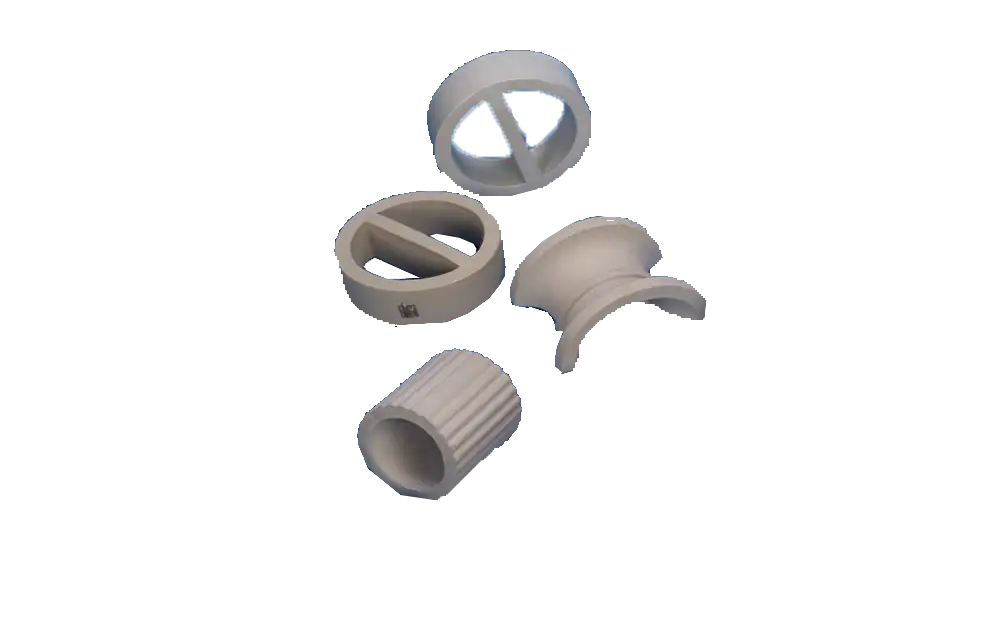Refractory ceramic parts are widely used in various industries, including petrochemical, steel, glass, and ceramic industries, due to their exceptional resistance to heat, corrosion, and abrasion. These parts are manufactured in various shapes, such as ferrules, cap plates, filters, washers, discs, and ceramic studs, each serving specific functions.
Types of Refractory Ceramic Parts
Ceramic Ferrules
These alumina ceramic parts are employed to protect the weld joints of boiler exhaust plates, waste heat boilers, and high-temperature heat exchangers in petrochemical industries and sulfur recovery units in oil and gas refineries. Ceramic ferrules withstand high-temperature flue gas abrasion and acidic and alkaline corrosion. They come in various types, including alumina ferrules and zirconia ferrules.
Ceramic Cap Plates
These ceramic parts act as ceramic fasteners to secure ceramic fiber blankets to furnace walls. They also resist high temperatures and corrosive atmospheres in the furnaces of oil, gas, petrochemical, steel, sanitaryware, and ceramic industries.
Ceramic Filters
Ceramic filters are used to filter and control the flow rate of molten metal during casting into molds. This process enhances the quality and uniformity of the cast part.
Other Refractory Ceramic Parts
This category includes washers, discs, ceramic studs, and more, which are used to insulate furnace walls with ceramic fiber blankets and serve as blanket retainers on furnace walls.
Advantages of Using Refractory Ceramic Parts
- High resistance to heat, corrosion, and abrasion
- Extended equipment lifespan
- Reduced maintenance costs
- Improved product quality and uniformity
- Energy savings
Applications of Refractory Ceramic Parts
- Steel industry
- Petrochemical industry
- Oil and gas industry
- Ceramic and sanitaryware industry
- Glass industry
- Food industry
- Pharmaceutical industry
Ceramic Cuplock, Washer & Ferul

Key Considerations When Selecting Refractory Ceramic Parts
- Choose the appropriate type of refractory ceramic part based on the operating conditions: Specialized ceramic components are tailored for distinct applications. Consider factors such as temperature, pressure, chemical exposure, and abrasion when making your selection.
- Prioritize quality and brand reputation: Opt for high-quality products from reputable manufacturers known for their expertise and consistent performance.
- Purchase from established and experienced companies: Source refractory ceramic parts from companies with a proven track record and a commitment to quality control.
- Seek expert advice: Consult with specialists in the field to obtain personalized recommendations and guidance based on your specific needs and requirements.
Conclusion
They play a crucial role in various industries due to their exceptional properties and numerous benefits. Selecting the right type of part and utilizing high-quality products can significantly enhance equipment lifespan, reduce costs, and improve product quality. By following these key considerations, you can make informed decisions that contribute to the success of your operations.


Leave a Reply